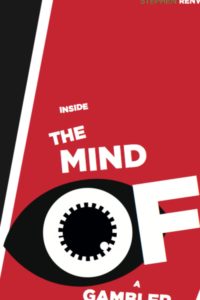Dan DeFreest
May 27, 2016 | Non Fiction, 1st pages

The purpose of this book is to offer a historical perspective on how the middle class climbed from the depths of the Great Depression to a level of relative comfort in the 1970s and then watched as Republican policies have slowly eroded the foundations that supported their version of the American dream. From the breaking of labor unions to the repeal of Glass-Steagall, to suppression of the minimum wage, conservative initiatives have focused on elevating those who benefit t most from the free enterprise system at the expense of people who suffer the most from these efforts. To this end, the embracing of Christian ideals and wrapping them around conservative Republican initiatives have ultimately held down the very people whom Jesus admonished us to lift up.
Those initiatives, which I call “moral dichotomies,” are the relevant social issues facing middle-class Americans that conservative lawmakers have been hacking away at and re-defining, while claiming, at the same time, to empathetically understand the pain being endured by the victims of their efforts. Later in this book, we’ll see how this double-minded morality will eventually have dire consequences for the conservatives in future elections, when various demographic elements of the electorate are forced back to the election booths during both off-year and general election years to voice their displeasure. These groups, consisting of women, minorities, the elderly, and disenfranchised lower-middle-class whites, make up a large portion of the real silent majority and are each, as well as collectively, growing. Their voices were heard above the crowd during the last two presidential elections and are becoming louder, even as conservative ideologies have sought to quiet them with redistricting and voter identifi cation laws. Historically, it is these voters who decide who our eventual commander in chief will be.
Pauline Cole
May 27, 2016 | Non Fiction, 1st pages
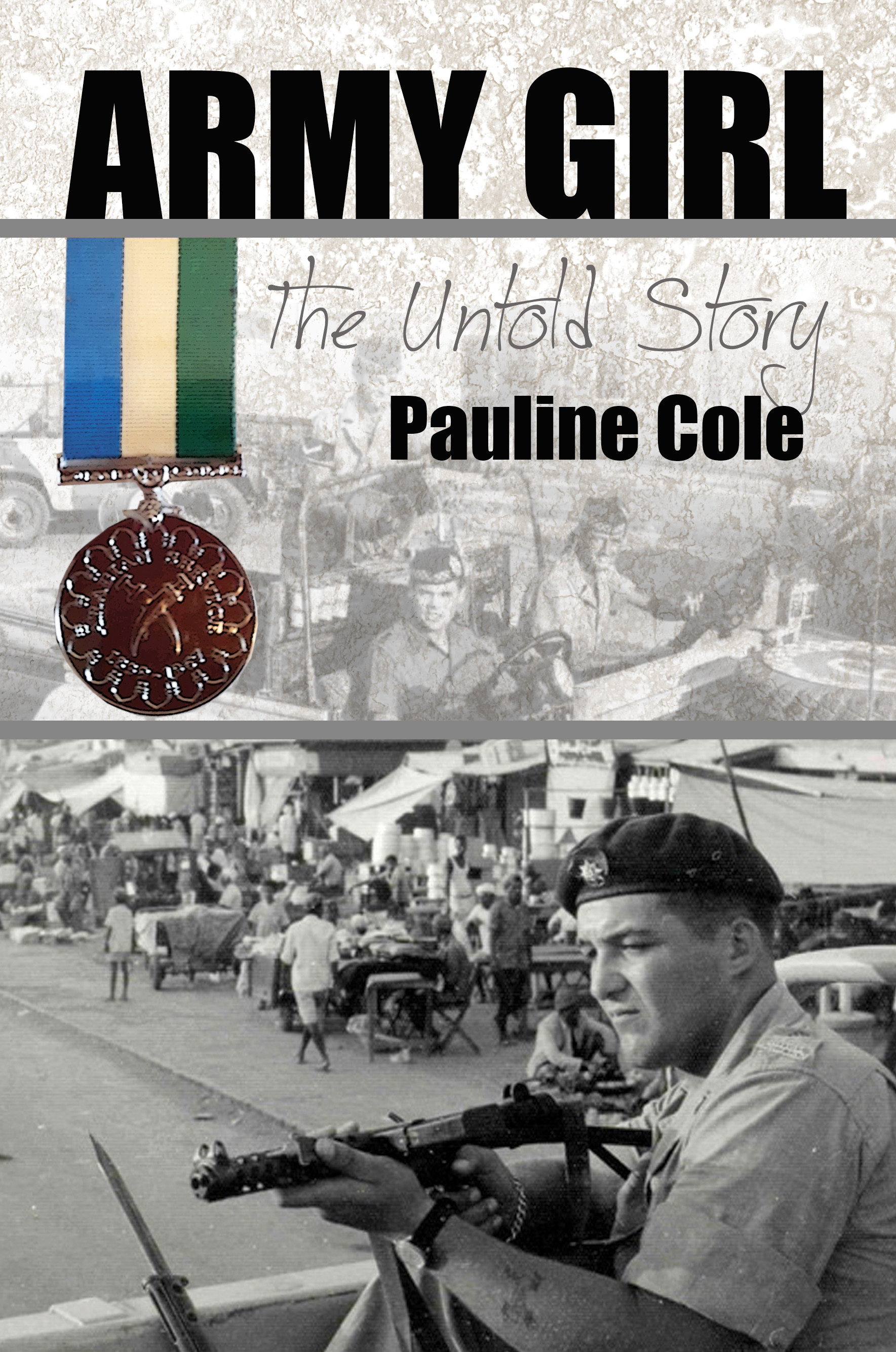
This is a wonderfully evocative memoir of Pauline Cole, who joined the Army at the age of eighteen and enjoyed many years of successful service with them in the field of communications. She remains the only blind ex-servicewoman in the country, a veteran of one of the nastiest fields of action since the second world war. Although trained in communications, Pauline found herself in the front line during the Aden Emergency, 1967. She saw active service, used weapons in dangerous situations and coped at first hand with Arab and Egyptian terrorists.
After Aden, her army career took her to Germany where she manned the telephone exchange during a crucial period of the Cold War. Her experiences in Aden remain the highlight of her life and she has begun research into the political background of a campaign that she saw on the ground, never feeling entirely confident that the Government took proper steps to safeguard their moral responsibility towards a former Crown Colon. She is a vocal spokesman for the virtues of Army training. The disciplines she served her well throughout her life. She loved the camaraderie, the physical demands and even the dangers involved. It might not suit every young woman- but Pauline was a very round peg in a very round hole.
Cathy Rafferty
May 27, 2016 | Non Fiction, 1st pages
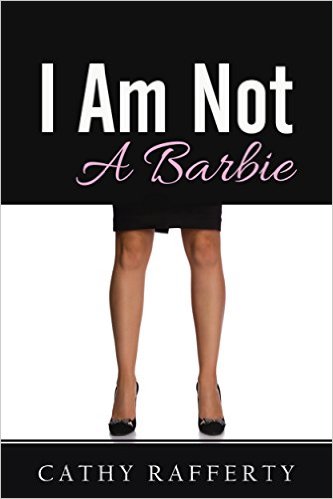
Introduction
Of all the relationships women engage in on a daily basis – friend, lover, wife, mother, co-worker, boss – the one we seem to have the most trouble with is actually the most important relationship of all: the one we have with ourselves. In a world still dominated by men, being a woman is never easy – and it’s even harder when we can’t even be our own best friends. The things we say to ourselves, about our appearance, our skill levels, our accomplishments and our future, we would never say to another living person. Why is that? Why are we so eager to run ourselves down when there is no shortage of people out there willing to join the chorus?
Could it be that we spend so much time working on the other relationships in our lives, making sure everyone else is happy first, that we never take the time to work on the relationship we have with ourselves?
I Am Not A Barbie aims to end our non-existent and, in some cases, self-destructive relationship with ourselves and the others in our lives. How? By learning to understand what goes into a relationship, steps for making it work and how to fix it when it’s broken. Whether you’re sheets-deep in a brand new romantic relationship, struggling as a new wife – or new mother – or simply at odds with your friends, lover, co-workers or family members, this book will teach you that all relationships improve once you learn to handle your own first.
Ramakrishna Reddy
May 18, 2016 | Non Fiction, 1st pages, Self Help
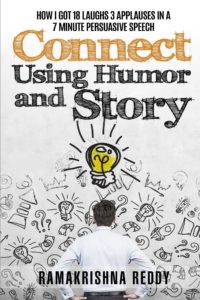
What makes a great Story? A great Story is when an ordinary character overcomes seemingly impossible circumstances to achieve a goal. That’s it. If you can understand this sentence and digest each and every word and reflect it in your story creation process, you are already halfway into creating exciting content.
Now, what is Humor? In simple terms, Humor brings amusement and laughter to a speech so that the audience is entertained.
Then what is Persuasion? In the context of a speech, Persuasion is the speaker’s skill at influencing how the audience thinks, feels or acts as a result of hearing the speech.
Persuasion from Aristotle
Aristotle in his masterpiece Rhetoric wrote that Persuasion is the result of Ethos, Logos, and Pathos. To be concise, Ethos is credibility, Pathos is the emotional connect and Logos is the logic in your speech. The best way to use these three elements when speaking is through the use of a personal story. Why a personal story, and not just any story? When you speak, you need credibility (Ethos) and that’s what comes through in a personal story. If it is the story of your own life, you have the right to speak about it with authority. Logic (Logos) can be taken care by carefully crafting your speech content with the proper flow of ideas in a good order. The emotional connect (Pathos) is the main reason for using a story. Story is a powerhouse for Pathos because stories have the unique ability to transmit emotion. Emotion creates a great connection with the audience. And on top of it, if you add Humor, you will hit a home run.
I can tell that Humor and Story are the greatest tools for any speaker. Story has the power to transmit emotion and humor helps to deliver positive emotions. Hence, used together, humorous stories make for one of the best mediums to connect with an audience. A great story has a life of its own. With a great story, your words walk into the hearts of your listeners. When you add humor, your words will fly into the hearts of your listeners.
Perspectives of Humor
Dr. Charles Jarvis, a dentist, a humorist and Hall of Fame speaker defined Humor as “the mental faculty of discovering, expressing or appreciating the ludicrous or absurdly incongruous”. Dr. Jarvis shares two definitions of humor with us. The first is “a painful thing told playfully”. The second is “tragedy separated by time and space”. Note that both definitions treat humor as a serious thought viewed in a light manner.
Ever heard someone say, “I laughed so hard I nearly cried”? This shows how close Humor is to pathos: an emotion of sympathetic pity.
The other theory, which is really cool, is the Benign Violation theory coined by Dr. Peter McGraw and Joel Warner. I heard this theory from a TED talk ‘What makes things funny’ by Dr. Peter McGraw. Although he is not a standup comedian, he has done a lot of research on humor. According to the duo, Humor gets created when there is a benign (harmless or safe) violation from what is acceptable. They illustrate this theory by using the old gag of someone slipping on a banana peel. Such an accident usually elicits a laugh. However, if the person was hurt badly in the fall, it won’t elicit a laugh because it has become harmful and the playful element has been lost.
Sophie Scott in her TED talk ’Why we laugh’ said, “When you are alone, you do not laugh often. It means the humor creation is beyond just the quality of the joke. You laugh because you say that you understand the speaker and you agree with the speaker”.
Humor creates a strong bond and is a vital element for connection. When an audience laughs, it means more than just being entertained, their laughter says they understand you, they like you.
Persuasive Story with Humor
Now that we understand perspectives of humor, let’s understand perspectives about story. There are many types of stories and as I mentioned earlier, it would be cool idea to focus on using a personal story for persuasion. On the contrary, you can persuade even without humor if you tell a moving story of someone dying in your arms, or how you climbed Mt. Everest, or fought with a tiger, etc., but if you, like me, don’t have such an emotional story, humor is your mantra.
In order to inject humor into your speech in an organic way, you need to learn the skills needed to craft a persuasive story. Did you notice that I used the word skill? That is because knowing how to craft a persuasive story is a skill. That’s the reason I am about to carefully lead you through a tested persuasive and humorous speech. Along the way, we will uncover its secrets and strategies and you will learn the nuts and bolts of how it was created so that you can create your own humorous and persuasive stories. You will also learn the secrets to editing and delivering your speech in ways which will keep your audience engaged and entertained.
Some people are so talented that humor just pours out of them. And then there are those like me! Many people think creating humor is hard, but actually it is not. Learning to be humorous is a skill you can master if you are willing to work at it. To begin, here is something that you can use. There are many variations to the following humor equation and they can all work because people laugh at different things for different reasons. The following, however, is a good one to follow for crafting laugh lines within a speech.
Premise + Pause + Punch Line + Pause = Laughter
Let us understand the elements with a laugh line.
“People exaggerate that parents in India pressure their children to only become a doctor or an engineer. That’s not true. They don’t just pressure. They blackmail.”
I have re-written the above laugh line to indicate the different elements of humor.
“People exaggerate that parents in India pressure their children to only become a doctor or an engineer. That’s not true. They don’t just pressure. They blackmail .”
Premise: The premise is the information needed for an audience to understand or appreciate the punch line. In our example, words highlighted in italics form the premise.
The Premise must:
• Be believable, even if not completely true. In our example, the premise is believable because the audience also could agree it is a cultural thing that Indian parents are pretty hard on their child’s ambition
• Lead the audience in one direction (in order to surprise them later). Note that I said, “That’s not true. They don’t just pressure”. This leads the audience to think that I am going to say something positive about Indian parents
• Not be funny
• Be easily understood
• Create anticipation in the minds of the audience
• Be relevant for the audience
• Be about a situation with which the audience can identify and empathize
Pause 1: Is needed to build tension. Pause 1 must:
• Heighten the curiosity
• Not be so long that the audience lose interest
• Be long enough to create tension. This is what is known as timing
Punch Line: It is a word or phrase that follows the pause that triggers laughter. Punch Line should create surprise by saying something contrary to the audience’s expectation. Here, the punch line is, “They blackmail”. The laughter is the result of the release of the tension built up during the pause.
Pause 2: This pause gives the audience time to laugh. Again, it’s the timing that is important in comedy and many speakers make the mistake of not pausing after they trigger the laugh. If you do not pause, you will be cutting the laughter short—don’t do this—enjoy it and let the audience enjoy it, too.
Also, during this pause for laughter, you can get the most out of it by using gestures or even a deadpan expression to maximize the effect. Try different gestures to see which one works best.
Stephen Renwick
May 11, 2016 | Non Fiction, 1st pages
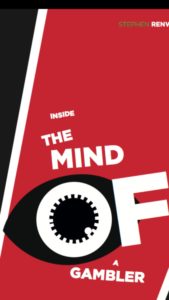
“Inside the Mind of a Gambler” offers a fascinating insight into the mind of a gambler and why they do what they do. This is in the form of a case study of a man called Guy and goes in depth into his gambling addiction.
The book is split into the case study of a pathological gambler who hit the depths of despair and came back to lead a gambling free life, and then the book looks at the psychological side of the gambler.
There is the advice from Guy himself, psychological strategist and a leading psychiatrist on how to quit.
James J Houts
May 4, 2016 | Non Fiction, 1st pages

Overture
Action!
How I Beat the S&P Average by 56 Percent in 2008
In the 1962 movie Lonely are the Brave, Kirk Douglas stars as Jack Burns, a cowboy who won’t accept the changes of the modern-day world. George Kennedy plays the mean jail guard, Deputy Gutierrez. Burns protects his friend Paul Bond, played by Michael Kane, from the sadistic Gutierrez, and the jailer turns his hate to him. When Gutierrez demands his name, Burns says happily, “John W. Burns.” That night Gutierrez calls his name menacingly from the far off entrance to the cellblock, “John…W…Burns.” In his cell, Burns starts preparing for the beating he knows he is going to get, tearing small pieces from his shirt, and stuffing them up his nose and under his lip. When his cellmate asks him what the hell he’s doing, Burns replies calmly between bites of his shirt, “Nose of mine cracks easy. Man’s going to give me fair notice, no reason I shouldn’t prop it up a little.”
***
I have been investing in the stock market for thirty-five years and in the real estate market for twenty-five. In 2008, when almost every other investor got crushed, and even the Wall Street “experts” were down by almost half, I was up 17 percent—beating the S&P Average by over 50 percent. I made some good trades during 2008, but most of that 50 percent “beat” was made before the stock and real estate markets rolled over. I did it by seeing the danger coming and taking steps to protect myself—you might say I stuffed a little of my shirt up under my lip. This book is the story of how I did it and how you too can do it in the future.





